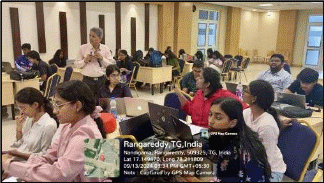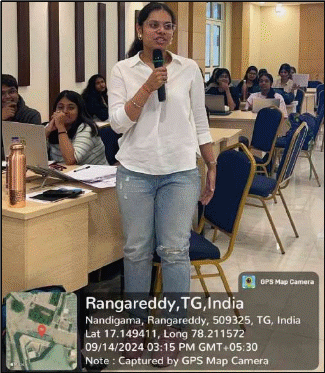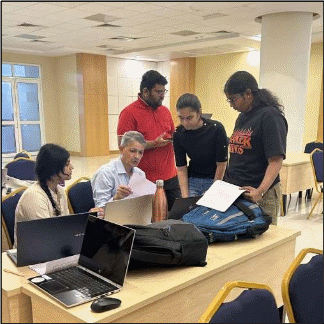Event Name: Business Simulation Workshop
Event Overview:
The Business Simulation workshop, organised by SCMS-Hyderabad in collaboration with the All India Management Association (AIMA), was held on the 13th and 14th of September 2024. This two-day intensive workshop was aimed at providing students with an immersive, hands-on experience in a simulated business environment, allowing them to apply theoretical knowledge to real-world business scenarios. The workshop utilised AIMA's powerful business simulation software, Chanakya, to simulate complex, dynamic business conditions.
Facilitator Overview:
The workshop was expertly facilitated by Mr. S.C. Tyagi, a distinguished professional from AIMA with a deep understanding of business simulations and over three decades of experience. His guidance was instrumental in helping participants navigate the complexities of the simulation. Mr. Tyagi provided thorough briefings and explained the intricate details of the "Chanakya" software, ensuring that all participants understood the simulation rules, decision-making processes, and winning criteria. He consistently engaged with participants, offering personalised feedback and addressing queries. His ability to simplify complex scenarios helped participants gain valuable insights into real-world business management, making the workshop both educational and enjoyable.
Objectives:
Outcomes:
Brief Report:
The Business Simulation Workshop commenced with a briefing on September 13, 2024, where Mr. Tyagi introduced participants to Business Simulation, the Chanakya simulation software and the rules of the workshop, ensuring that all participants understood the scope and expectations. Participants were divided into 9 teams, each team responsible for running a multimillion-dollar company in a Mobile Music Player Industry. Key roles, such as CEO, CFO, COO, and CMO, were assigned to the participants, with the overall objective being to maximise their Cumulative Profit After Tax (Cum PAT) across five decision-making rounds.
At the start, participants were provided with essential documents, including a Sectoral Analysis Report (SAR), Management Report (MR), and the starting conditions for their virtual companies. These documents detailed the initial financial status, market positions, available resources, and product lines each team would manage during the simulation. The primary raw materials for production were wafer and wrap, which were used to produce four different finished products: Palms, Mili, Sticks, Bones. Each product varied in cost, selling price, and market demand, requiring teams to carefully manage procurement, production, and pricing to meet market demands while controlling costs.
The trial round began after the introductory session to familiarise participants with the simulation's interface and decision-making process. During this round, teams reviewed their SAR and MR, and each team was given a decision sheet where they needed to input critical choices related to production capacity, raw material procurement, pricing strategy, etc. Following the trial round, participants entered into five competitive rounds, each with a strict time limit, requiring participants to collaborate efficiently and make decisions under time pressure.
Throughout the simulation, each decision round introduced new market updates to challenge the participants. For example, teams had to respond to changes in labor costs, raw material prices, and machine costs. These updates were provided in quarterly reports called "Gazettes," which were distributed to the teams at the end of each decision round, allowing them to refine their strategies for the following rounds.
Over the course of the five decision-making rounds, teams were required to make strategic decisions regarding production, product pricing, dealer commissions, outsourcing, offshoring, advertising, plant and machinery upgrades and investments in fixed deposits, issuing shares, managing production strikes and whether to take out bank loans.
Participants were provided with a decision sheet for each quarter. The decision sheet, designed in Excel format, contained multiple sections where teams entered key decisions. These decisions were then fed into the "Chanakya" simulation software, which calculated the results based on the teams' choices.






